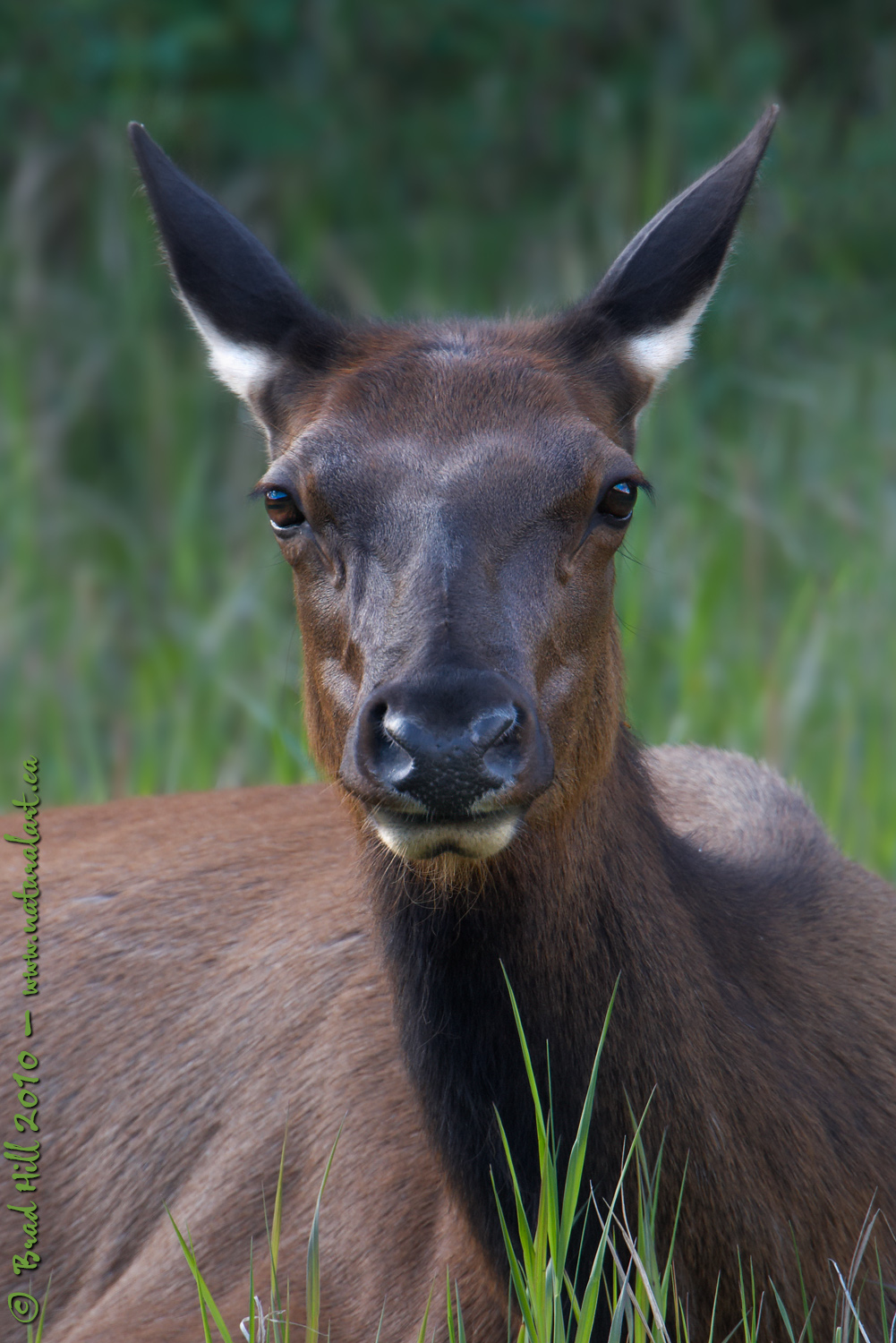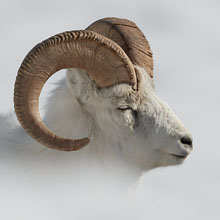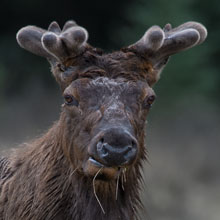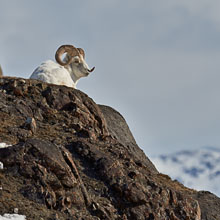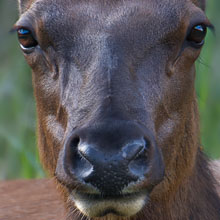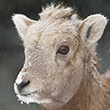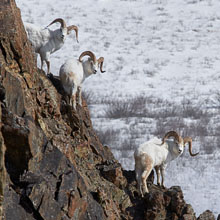Availability: Undetermined - Enquiries?
In the Field
Nuances - Elk @ Daybreak. Kootenay National Park, BC, Canada. June 27, 2010.
The pure and simple beauty of wildlife never ceases to amaze and impress me. And it can be so darned easy to overlook! I shot this image very early on a late June morning in 2010. My goal that morning had been to photograph Mountain Goats (females with kids) but I had struck out (I couldn't find them). I was just about to head home when I looked into a meadow and saw two female elk laying down and watching me. The sun still hadn't made it clear of the high mountains, so the elk were in soft light. The elk seemed so calm and relaxed that I didn't want to move any closer at all, and I happened to have a long lens plus 2x teleconverter with me. So, I placed my 600mm lens plus 2x TC on my D3s, placed the heavy setup on a beanbag balanced on a rock, and took a look through the viewfinder. I was immediately struck by the beauty of the soft (though slightly directional) lighting and the dark tones in the elk's face. When the elk turned both ears to the side I saw the beautiful black backside (which, to be honest, I didn't even know they had) which contrasted so well with the white base.
I hung with the two elk for about the next half hour, capturing different poses while they laid there. After a time they both started to regurgitate boluses of food and, quite literally, chew their cud. When sunlight struck the two elk I decided to pack up and leave. Nice experience.
The resulting images from the encounter aren't what I'd call dramatic, but I quite like many of them. They're nuanced and subtle, but if you take the time to REALLY look at them, there's a lot there (like the beatiful blue sky reflecting in this elk's eyes). And, I'm growing very fond of the light BEFORE sunrise. I'm grateful that some of the newer high-end digital cameras allow you to work in such low light, though after a few weeks of getting up HOURS before sunrise to work with this beautiful soft light I don't know if I should praise or curse Nikon for producing the D3S!
Behind the Camera
Nuances - Elk @ Daybreak. Kootenay National Park, BC, Canada. June 27, 2010.
Digital Capture; RAW 14-bit format; ISO 1400.
Nikon D3s with Nikkor 600mm f4 VR lens paired with 2x TC-20EIII teleconverter (1200mm EFL) - supported on bean bag. VR on and set to "Normal" mode.
1/125s @ f9; -0.33 stop compensation from matrix-metered exposure setting of camera.
At the Computer
Nuances - Elk @ Daybreak. Kootenay National Park, BC, Canada. June 27, 2010.
RAW Conversion to 16-bit TIFF, including first-pass/capture sharpening using Phase One's Capture One Pro 5. Two RAW conversions at different exposure settings. Exposure settings of -1.0 stops compensation (for bulk of image); -0.6 stops for left side of elk's face (right side of image) to slightly selectively/relatively lighten this portion of the face.
Further digital corrections on 16-bit TIFF file using Adobe's Photoshop CS5 and Light Craft's LightZone. Photoshop adjustments included compositing and masking of 2 exposure versions, selective saturation of colours and selective sharpening for web output. Final tonemapping and tweaking performed with LightZone use the (tonemapper/re-light tool). No noise reduction in post-processing (aside from "automatic" noise reduction during RAW conversion).
Conservation
Nuances - Elk @ Daybreak. Kootenay National Park, BC, Canada. June 27, 2010.
Species Status in Canada*: This species is not designated as at risk.
Elk (Cervus elaphus) are the second largest member of the deer family in British Columbia (and in North America). Rocky Mountain Elk (of the Cervus elaphus nelsoni subspecies) like to forage in a mix of grasslands and shrublands or in mixed coifer and deciduous forests. Elk are highly social mammals and their herding behaviour is thought to be an anti-predator strategy - with more eyes watching each individual Elk can spend a greater proportion of their time foraging. In British Columbia wolves are the main predators of all age and sex classes of Elk. Cougars will also prey on Elk of all ages, and both Grizzly and Black Bears prey primarily on the young of the year.
Elk are now common again in much of western North America - in fact Elk now are found in more habitats and in higher numbers (approaching a million animals) than any other time since 1900. The future on Elk populations in North America seems secure.
*as determined by COSEWIC: The Committee on the Status of Endangered Wildlife in Canada












